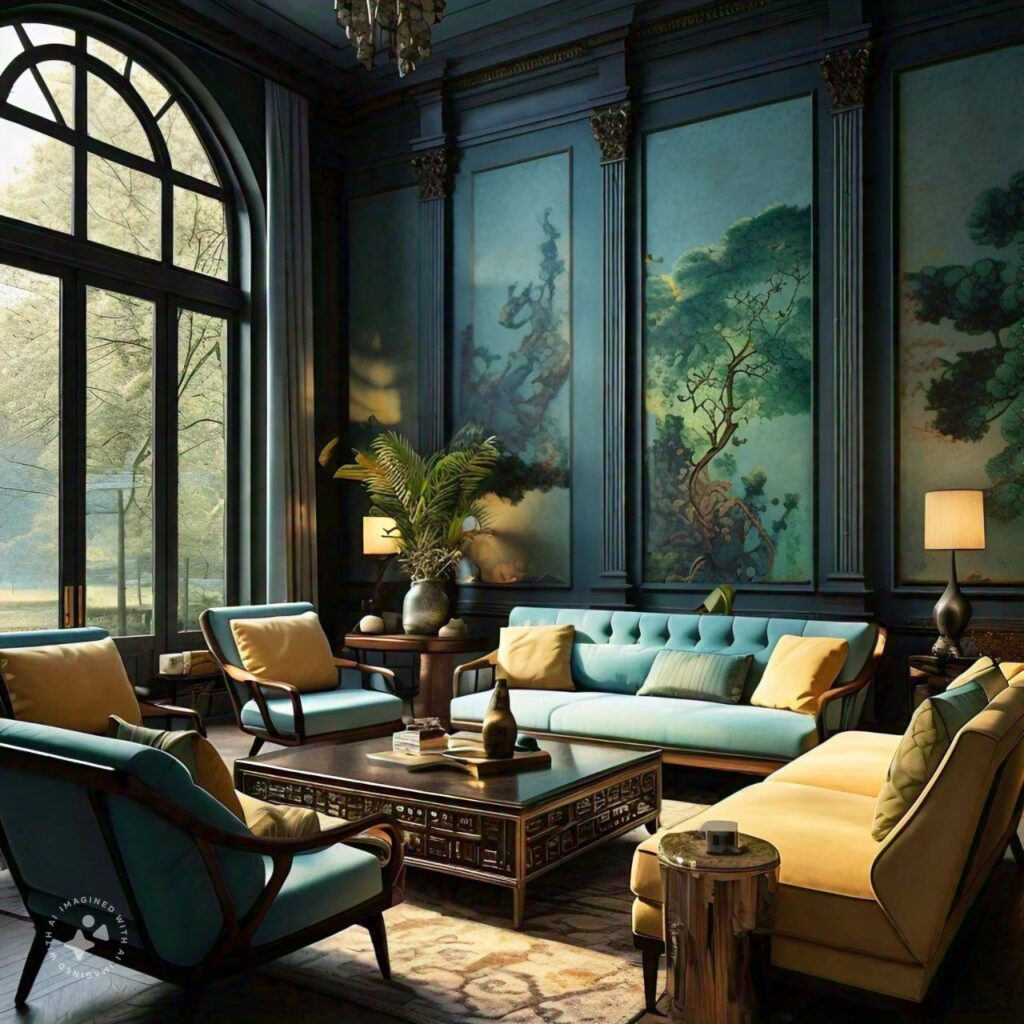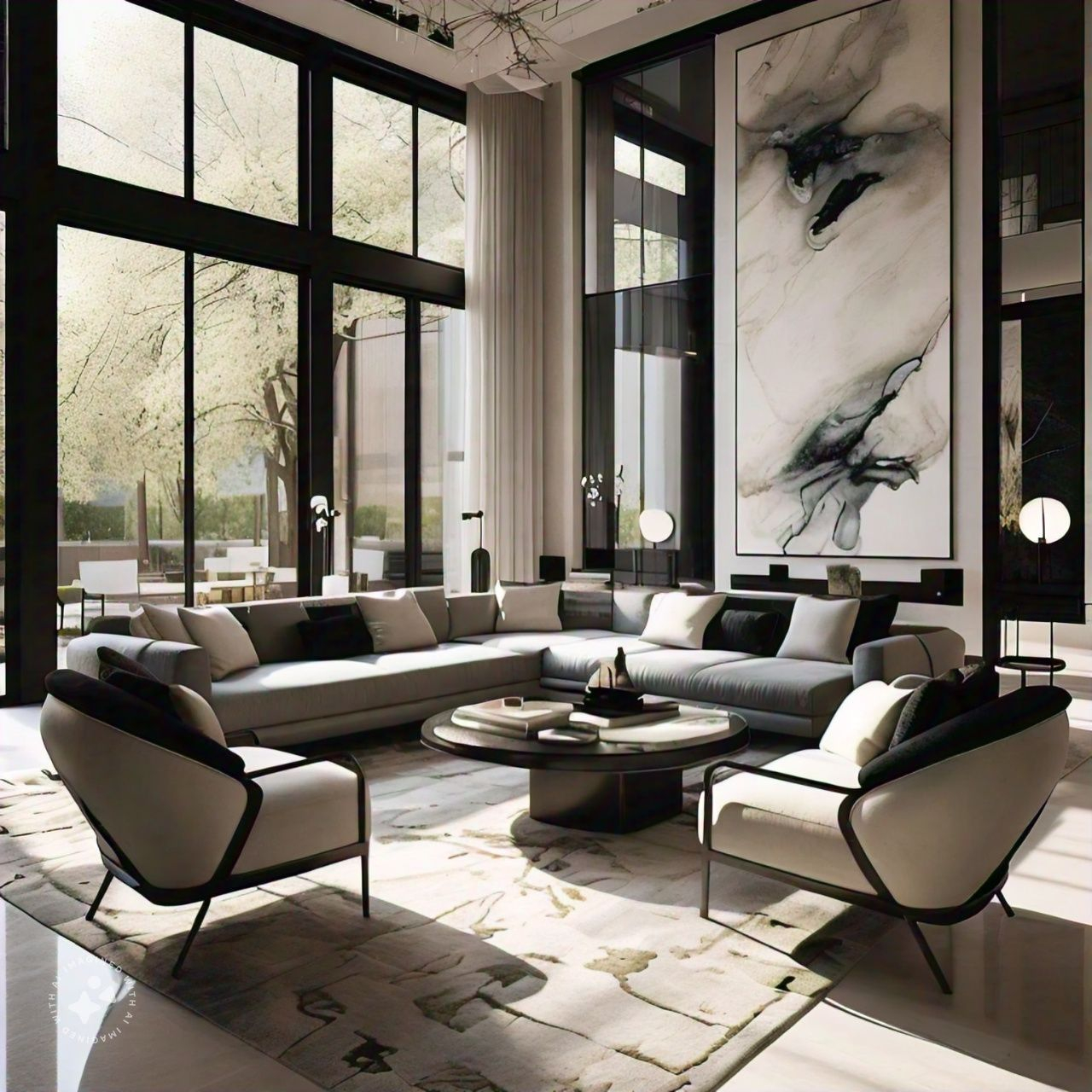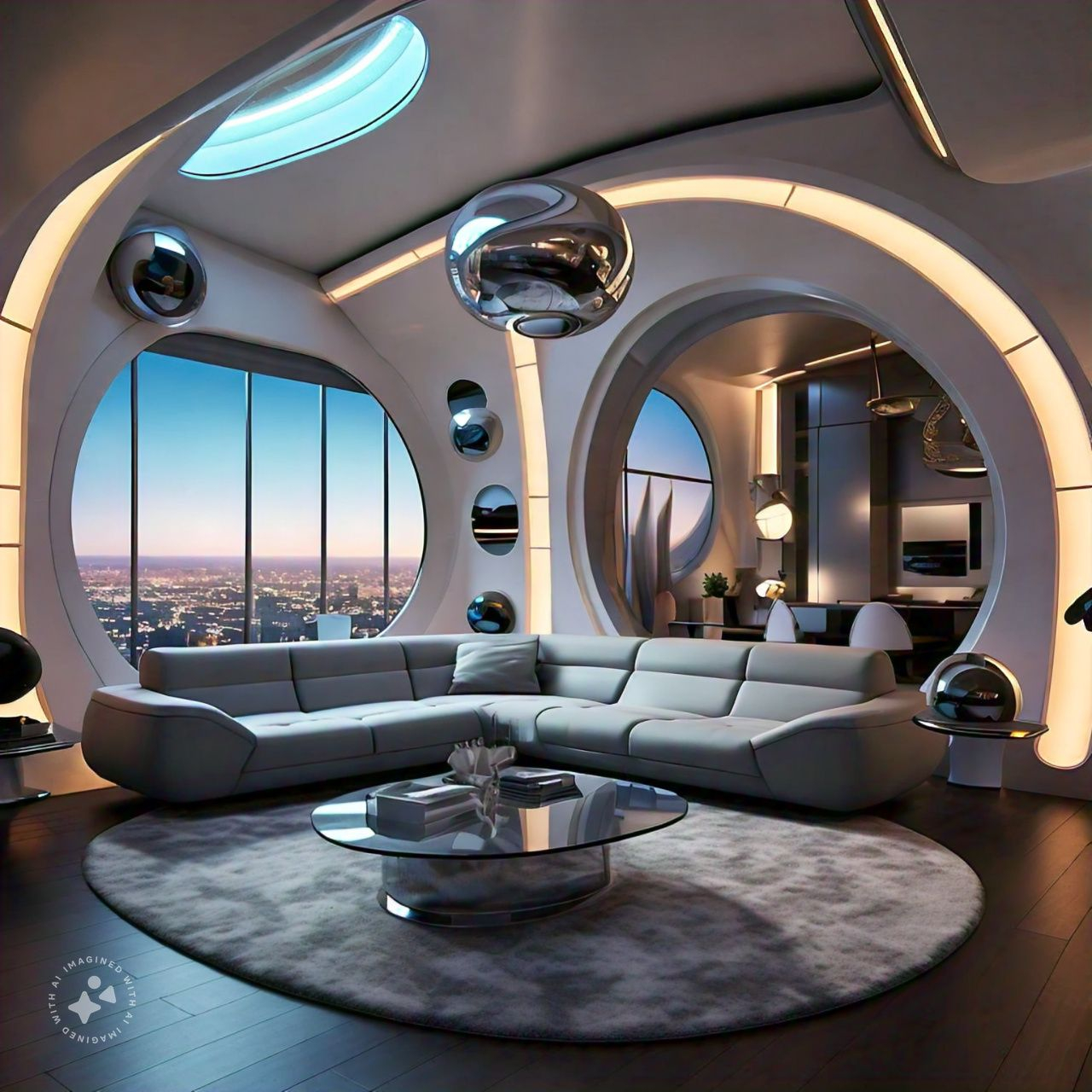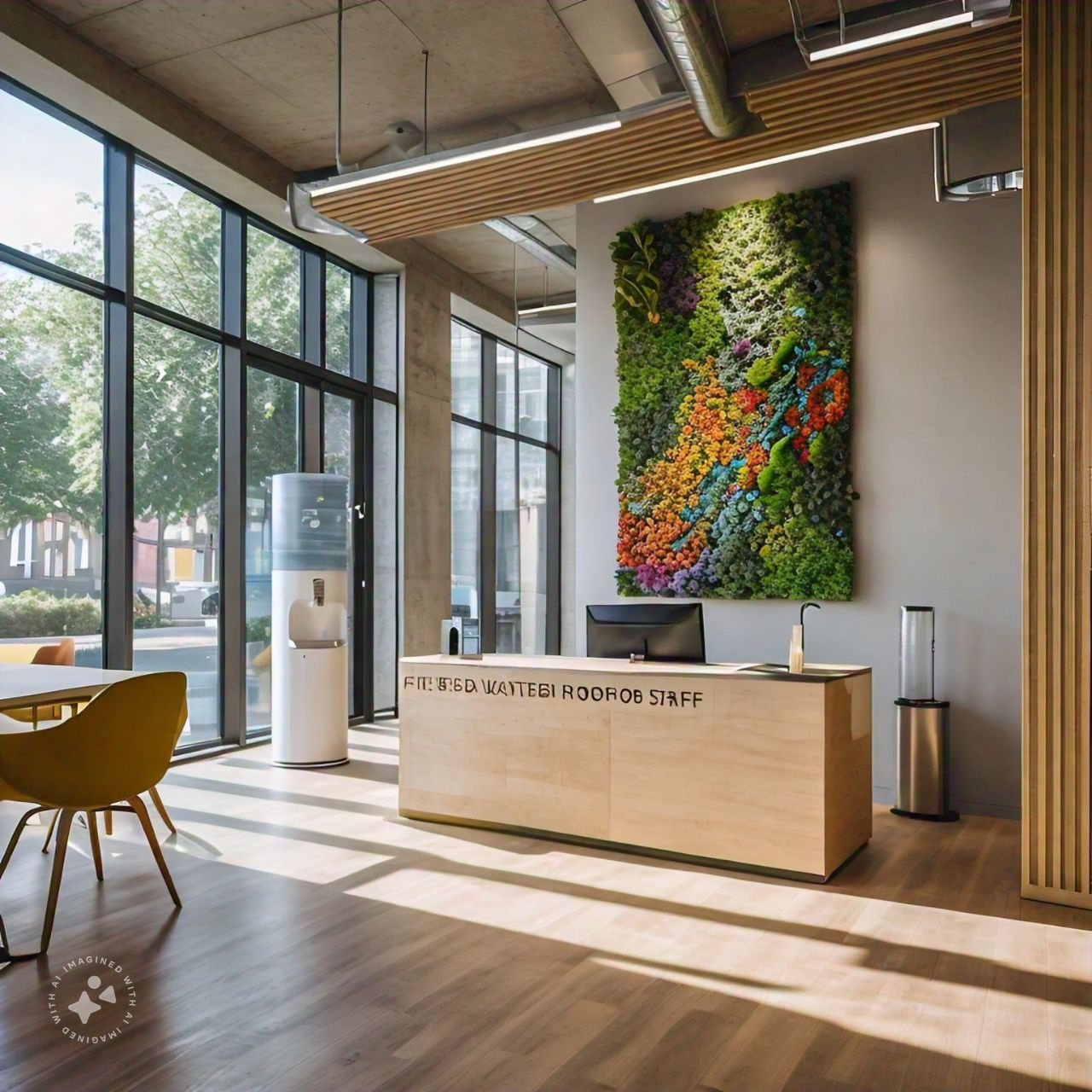Designing a home is such an exciting journey. Whether you are moving to a new place or planning to refresh your current living space, a solid plan makes all the difference. For that very reason, home design shouldn’t only be an art connected with making up a beautiful space; it’s a place where your personality fits in with your lifestyle and makes you feel easy. In this blog, we will discuss seven ultimate ideas for home designs that will trigger your mind to create an out-of-the-box and stunningly functional home.
- Embrace Open-Plan Living
The Beauty of Space
Probably the most popular trend in home design at present is an open-plan layout. It removes barriers like walls and doors and brings with it a smooth and unbroken flow through various parts of the home. Open-plan living space would be an amalgamation of kitchen, dining room, and living room into one single cohesive open space.
Benefits of Open-Plan Living

Maximizes Space: Open-plan living gives your home the impression of being more spacious.
More Natural Light: Less number of walls represents a lesser amount of obstruction for the windows, allowing better penetration of light into your home.
Better Socialization: It’s really good for family life or for people who entertain a lot because it surely advocates easier interaction and communication between the different spaces.
Greater Flexibility: Open-plan space is dynamic and will easily be rearranged for different needs and occasions.
Designing Your Open Plan Space
Definition of open-plan area: A range of different spaces can be outlined within one open space by using rugs, lighting, furniture placement, and decorations. This retains the flow of an open space but has defined areas.
- Add some natural touches
Bringing outdoors in
Features of nature in a home design can add serenity, warmth, and comfort. Commonly, this is called biophilic design; it refers to the association between humans and nature.
Natural Elements to Consider

Plants: Indoor plants are one of the most accessible and functional means to help you to connect nature with your living indoors. They are definitely a characteristic to any type of indoor space since they purify the air and add green beauty to the interior.
Warm and Textured: Natural Materials: Such elements have different attributes by bringing warmth and texture into the space. They may be in the form of wood used as furniture, stone countertops, or even bamboo flooring.
Natural Light: Accommodate as much natural light into your area with big windows, skylights, light-colored curtains. This simply depicts a brighter workplace but exerts some… Effects on Moods and Happiness.
Water Aspect: How about a small-scale indoor fountain or even an aquarium? Running water has soothing sound, and it adds sort of different, original feel to your home.
Inviting Biophilic Design: In biophilic design, the key elements of nature must be balanced against the comforts and luxuries of the modern world. This blend of new and old will give your home the feel of high-tech modernity blended with ancient, comforting contacts with nature.
- Strategical Use of Color
Power of Color
Color is one of the most essential components of house design; it sets up a mood and emphasis on architecture. It also shows personal style.
Choose Appropriate Colors

Neutral Tones: Unlike tautology, neutrals like white, beige, and gray have always been stylish and applicable. They can offer a cool, classic, chic background in which you simply put flashes of colored accessories.
Bold Accents: If you do really like color, then why not use bold tones as an accent? This could be in the form of a vibrant sofa, as a colorful piece of artwork, or as an accent wall, and will give your space osobnost’ and interest.
Color Psychology: Different colors have the tendency to create different emotions. For example, blue has a calming effect, and yellow energizes, while green refreshes. As you select your palette, consider the kind of mood you are trying to create in each room. Tips for Using Color Create Balance Mix a bold color with neutrals so that the area doesn’t become overwhelming.
Consider Lighting: Natural and artificial lighting will both pick up on colors. Paint samples should be tested in various lighting conditions before deciding on a color.
Use Color to Define Spaces: If one has open-plan lay-out, different colors can be used for different areas that identify those zones, creating visual separation without walls.
- Focus on Functional Furniture
Stylish and Practical
In design, furniture is not just about looking good. One needs to pick units that are looking nice and functional as well.
Tips for Choosing Functional Furniture

Multi-use furniture— space and convenience, this is what furniture that offers more than one function can give users. Of course, there are sofa beds, storage ottomans, or extendable dining tables that fall under this category.
Built-in storage— build in storage so your house will be more organized. This could include cabinetry, shelving, and under-bed storage.
Ergonomic Design: Choose furniture that guarantees comfort and health. A decent ergonomic chair, a height-adjustable desk, and a decent mattress make a hell of a difference in the quality of life.
Arrangement of Your Furniture
Consider Traffic Flow: Make easy passage and access to all parts of the room with proper furniture arrangement.
Conversation Areas: The sitting or seating in the living room should be arranged to encourage conversation and rapport between guests.
Scale and Proportion: Very important, the furniture should be scaled to the size of your room. Huge pieces in small spaces should be avoided.
- Add Smart Home Technology
The Future of Living
Smart home technology is really changing how we are living. The inclusion of smart devices in your home design is an assured way to improve convenience, security, and energy efficiency.
Smart Home Features

Smart Lighting: Dim, brighten, turn on and off bulbs with voice commands or from your smartphone. You can program schedules and scenes related to activities for the lighting.
Smart Thermostats: Devices learn your schedule and your selected temperatures to maximize the amount of energy used to heat and cool. They stop wastage and reduce utility bills.
Smart Security: Protect your home by using smart locks, cameras, alarm systems that give access remotely, and allow real-time alerts.
Voice Assistants: Amazon Echo and Google Home arc devices that control other smart devices, play music, remind through calendar events, and many more.
Home Automation: You get to integrate your devices into an automated home. As an example, turning off the lights, adjusting the thermostat, and locking the doors when leaving can be automated.
Also, in the design of your smart home, take into consideration the planning of the devices to allow for maximum performance and coverage. Aesthetic appeal should not be neglected in smart devices, too— choose those that will discreetly flow into your decor.
- Personalize Your Space
Make It Your Own
Your home should reflect your unique personality and style. Personalizing your space will give it the comfort needed and a feel of invitation.
Ways to Personalize Your Home
Artworks and decoration: Display artworks, photos, and decorative items that appeal to your character. This goes a long way in giving character and personality to your space.
Custom Furniture: Ensure that you are set up with made-to-order furniture designed especially for your true style and needs.
DIY Projects: Provide some personal touch through DIY projects. DIY projects give your own feel to a home, whether it be from a wooden homestead coffee table to any peculiarly customized wall of photos.
Hobbies and Collections: Incorporate some of your hobbies or interests in your decor. If you are a music lover, for example, display your instruments or develop a music-themed room.
Pulling It all Together
As you are customizing your space, try to achieve a similar appearance through the color and design theme since this holds numerous elements together.
7). Outdoor Living Space
Bring your interior outside
It’s becoming very popular, since most outdoor living spaces do offer an added area for relaxation and entertainment.
Designing Outdoor Spaces
Outdoor Furniture: Use sturdy, comfortable outdoor furniture. It can comprise a mix of different seating options: lounge chairs, dining sets, hammocks.
Shade and Shelter: Add shade structures- pergolas, umbrellas, or even retractable awnings to protect from the sun and the rain.
Outdoor Kitchens: Make an outdoor kitchen, complete with features like a grill, sink, and even a mini-fridge that make outdoor cooking a breeze.
Lighting: Add some ambiance and safety to your area by employing outdoor lighting. This works really well with string lights, lanterns, or pathway lighting.
Greenery and Landscaping: Add some plants, flowers, and landscaping to your outdoors and give this area the much-needed feel of nature.
Maximize Your Outdoor Space
Define the Zones: The outdoor space, just like any indoor space, has to be zoned. There needs to be its dining area, lounging area, and then there is the playing area.
Use All Seasons: Design your outdoor space to be used in different seasons. Put up a fire pit or an outdoor heater during the cooler months.
Conclusion
Designing one’s own home is very personal, but at the same time, it is highly rewarding. Embracing open-plan living, incorporating natural elements, using color strategically, focusing on functional furniture, adding smart home technology, personalizing your space, and creating an outdoor living space will help you fashion a beautiful, comfortable, and functional home.
What is most important in your home design is the one that reflects your soul, works just right with your lifestyle, and finds you feeling it like home. Happy designing!












